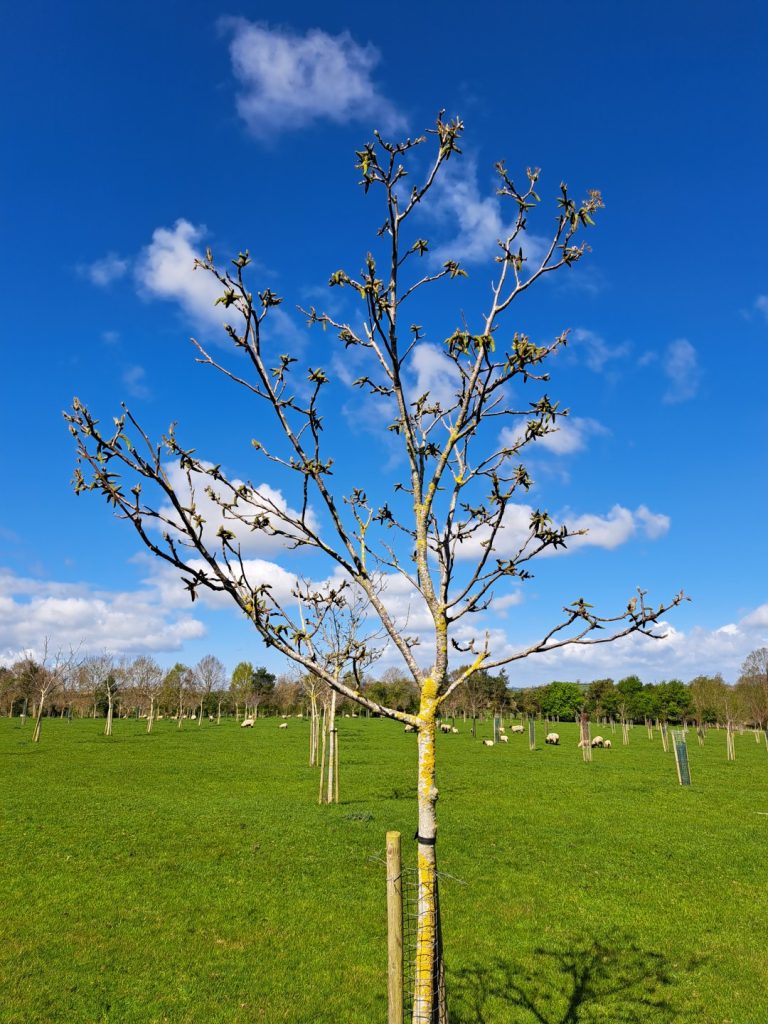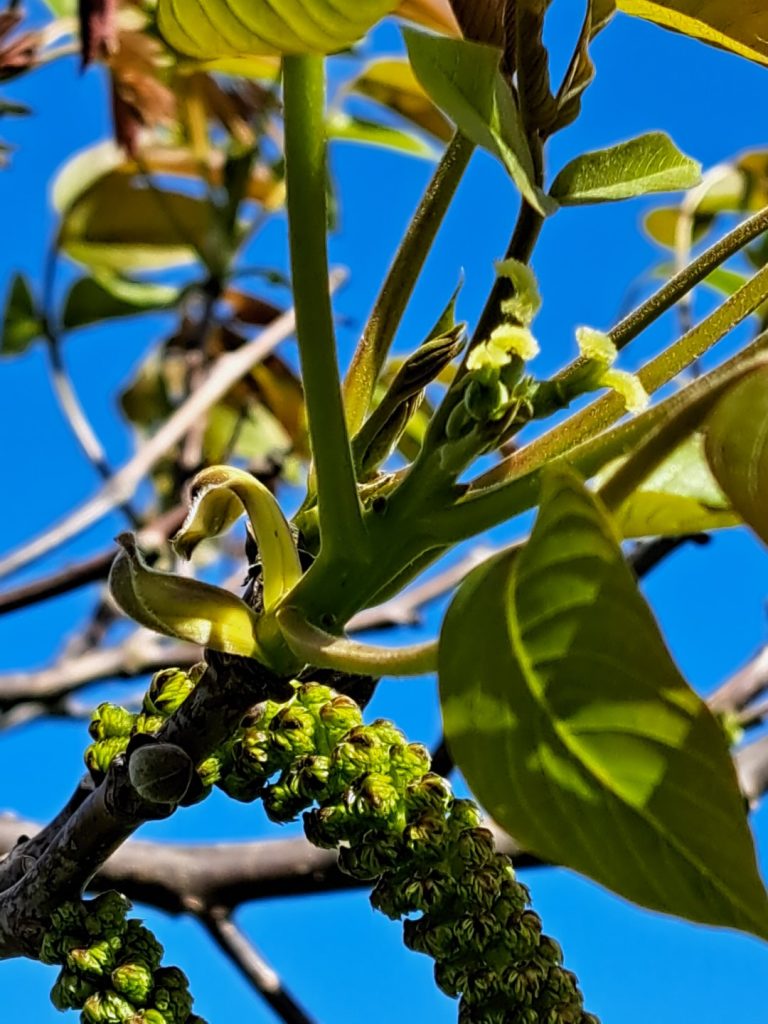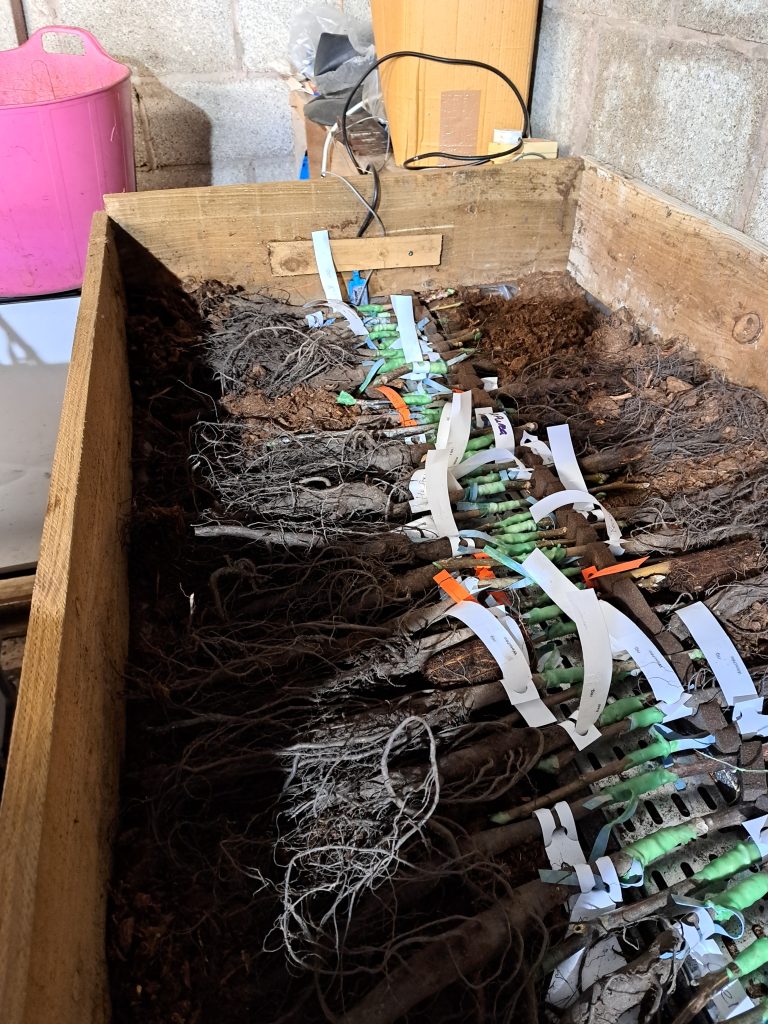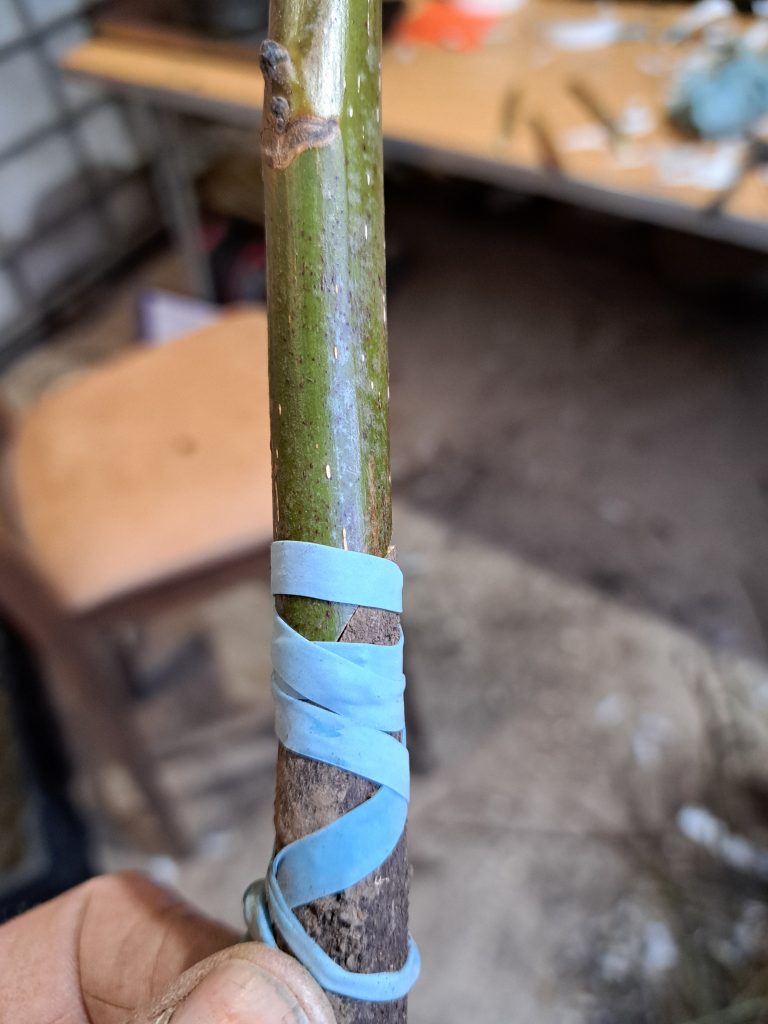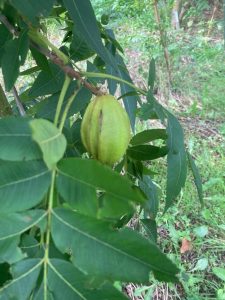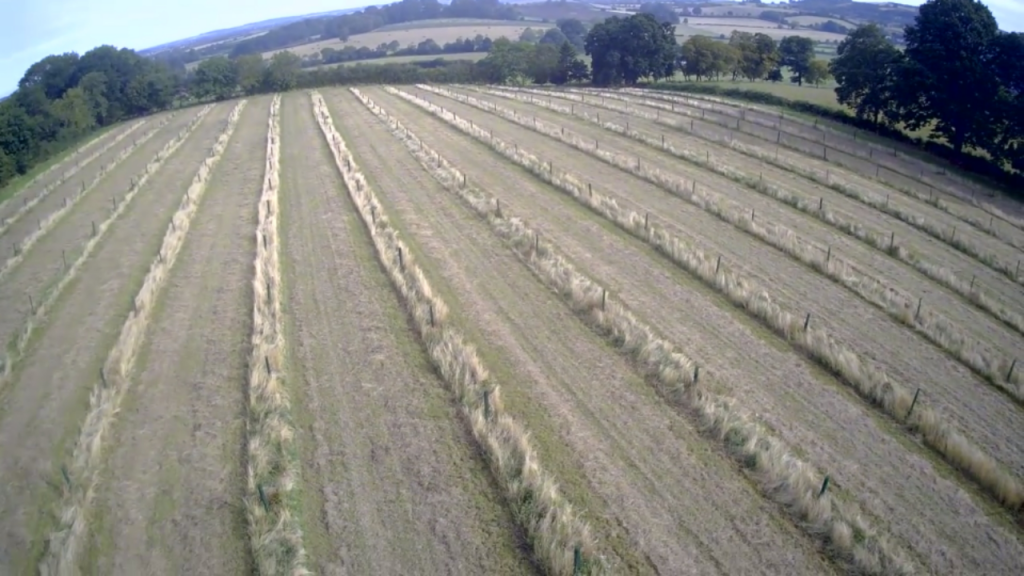The very mild wet winter with no really cold frosts (-5C Lowest) has meant a much earlier bud break and flowering start, 10-14 days depending on cultivar. This is true of all the different walnut species (including the Carya) and pretty much every Heartnut has juvenile leaves already, we’re praying no frosts now but realistically we need to get to mid May here to relax. The very latest cultivars like Fernor have just started loosening their outer bud scales about a week early.
It’s too early to say what effect the wettest winter in maybe 100+ years will have apart from killing a few trees in marginal positions, a bit more blight possibly if we get a very dry summer again, which for us on our mostly acidic old pasture seems to be an issue in some parts of the orchard.
The 1st picture below is of the heavy male catkins developing on walnut Jupiter already, these will probably start dropping pollen in 2-3 weeks maximum, they won’t be the earliest but it is one of the heaviest and most reliable of our main crop pollinators, better than Broadview which seems more sensitive if there are any frosts around.
The second image is of walnut Sychrov’s female and male flowers, this is always the earliest to bud break and set pollen and unfortunately 4 out of 5 years gets frosted, of the main crop walnuts Saturn is probably the next which is why we took out 35 trees and only left 15.
